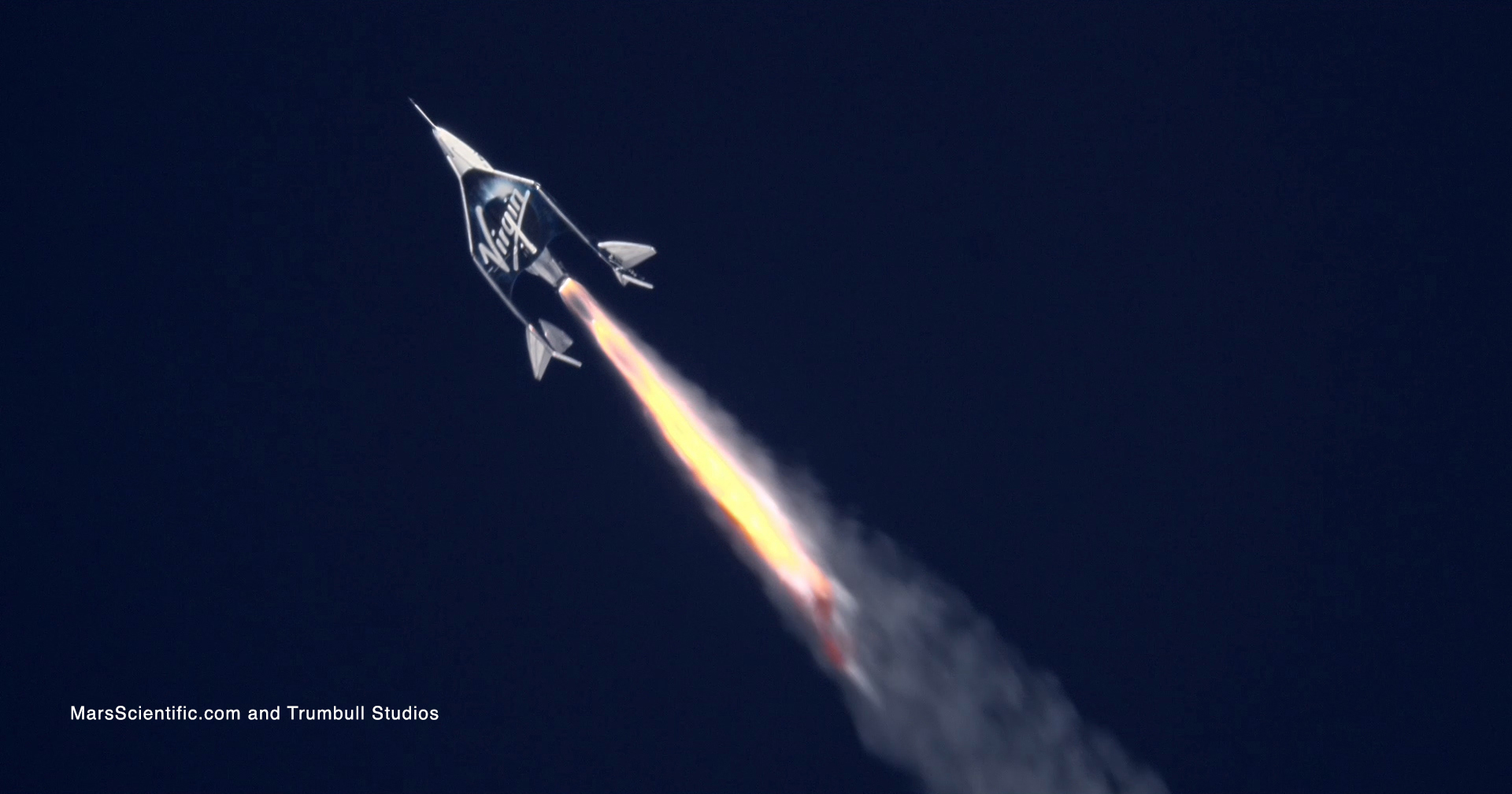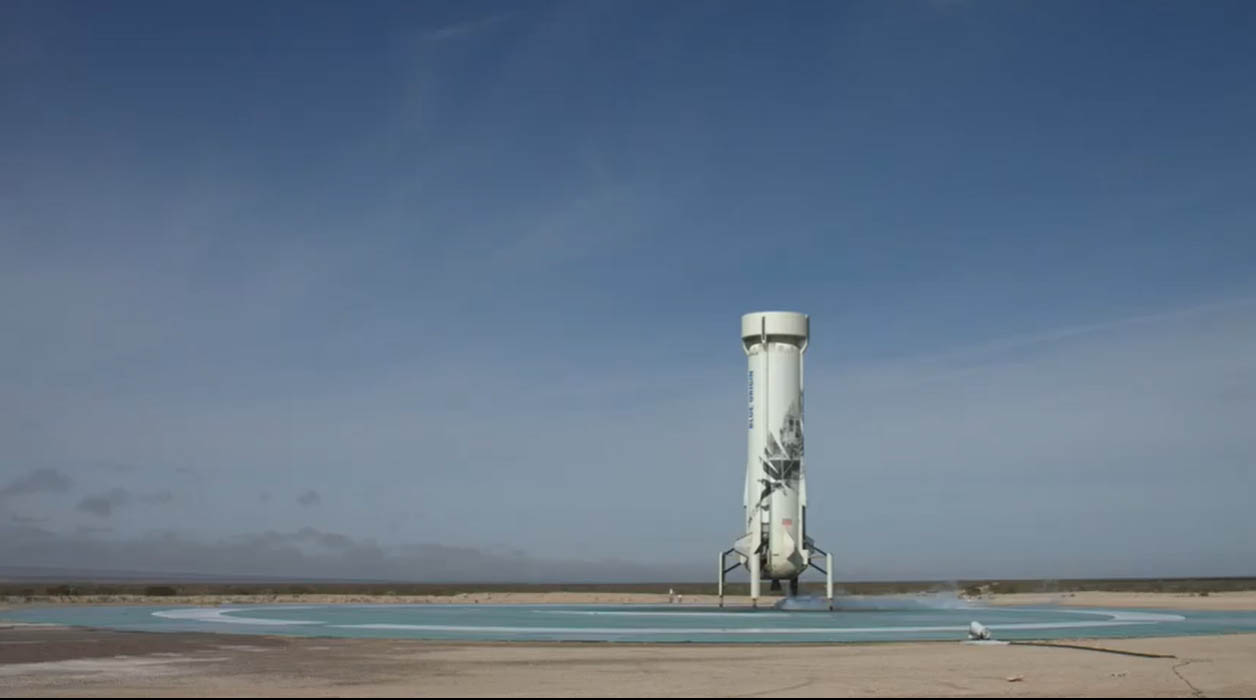What's the difference between orbital and suborbital spaceflight?
Explanation of suborbital and orbital flight.

Orbital and suborbital flight are common terms in the spaceflight industry that sound very similar, but they mean different things.
The main difference between orbital and suborbital flight is the speed at which a vehicle is traveling. An orbital spacecraft must achieve what is known as orbital velocity, whereas a suborbital rocket flies at a speed below that.
Orbital velocity is the speed that an object must maintain to remain in orbit around a planet, according to an explainer from the Austrian private aerospace company Orbspace. A good way to picture this is to imagine a ball being thrown at ground level — at a normal throwing speed, the ball travels in an arc through the air before hitting the ground. But say you were to put a little rocket on the ball that made it travel so fast that its arc shape would perfectly match the curvature of the Earth. At that point, the ball would have achieved orbit and would fly at a consistent height above our planet.
Related: Biggest milestones in human spaceflight
To orbit 125 miles (200 kilometers) above Earth, a spacecraft must travel at a screaming 17,400 mph (28,000 km/h). "It is actually this incredibly high speed which makes orbital space flight technically so complex and therefore expensive," Orbspace representatives wrote. One of the main reasons airplanes can't fly in space is that they don't go fast enough.
Suborbital flight, in contrast, requires much lower speeds. A suborbital rocket doesn't have the power to achieve orbit. Instead, it will fly up to a certain height that depends on its speed, and then come back down once its engines are shut off. To reach 125 miles above Earth, a suborbital vehicle needs to fly at a relatively sedate 3,700 mph (6,000 km/h), although that's still much faster than a commercial airplane, which flies at around 575 mph (925 km/h).
At the top of their flight arc, passengers in a suborbital vehicle will still achieve a few minutes of weightlessness. They are, in fact, falling back toward Earth, but they are experiencing freefall, similar to an airplane completing parabolic maneuvers to simulate zero gravity.

Launching space tourism and experiments in microgravity
Several private spaceflight companies are vying to take paying customers on either orbital or suborbital trips. Virgin Galactic and Blue Origin are in a race to achieve regular private suborbital flights in the near future.
Virgin Galactic has been aiming to take six passengers at a time in its SpaceShipTwo vehicle, giving customers a few minutes of microgravity as they fly. A ticket on SpaceShipTwo costs $250,000, and the vehicle's ongoing testing is bringing it closer to readiness.
Blue Origin has also conducted suborbital flights with its reusable New Shepard rocket. The company hopes to start carrying paying customers in 2020, though it has not disclosed the price of its trips, saying only that they will be in the "hundreds of thousands" of dollars initially.
Many scientists are excited at the prospect of using commercial suborbital vehicles for microgravity research. Such tests would be far less expensive than sending experiments and people to the International Space Station.
SpaceX has been sending materials and satellites into orbit for paying customers for a while now. Both SpaceX and the aerospace company Boeing are planning to start ferrying astronauts to orbit in 2020.
Here are some key milestones in orbital and suborbital flight:
- Oct. 3, 1942: Nazi aerospace engineers achieved the first suborbital flight of their V-2 rocket. The vehicles were weapons dropped on the Allies that, because of their great speed, were almost impossible to intercept.
- Oct. 4, 1957: The Soviet Union fired the opening shot in the space race, launching the first artificial satellite, Sputnik 1, into orbit.
- April 12, 1961: Soviet cosmonaut Yuri Gagarin made the first human orbital flight in history. He completed one orbit of our planet before coming back to Earth.
- May 5, 1961: U.S. astronaut Alan Shepard became the first American in space, traveling on a 15-minute suborbital flight.
- June 16, 1963: The Soviet Union's Valentina Tereshkova became the first woman in space, completing 48 orbits of Earth and remaining in space for nearly three days.
- Nov. 21, 1963: India launched its first suborbital rocket, Nike-Apache, whose components were built by NASA.
- April 24, 1970: Chinese engineers placed their first artificial satellite in orbit aboard the CZ-1 rocket.
- April 28, 2001: Dennis Tito became the first space tourist, paying a reported $20 million for a trip to orbit aboard a Russian Soyuz spacecraft.
- Oct. 4, 2004: SpaceShipOne won the Ansari X Prize by becoming the first private vehicle to reach suborbital space twice within five days. Its design was later bought and used by Virgin Galactic to create SpaceShipTwo.
- Sept. 28, 2008: SpaceX's Falcon 1 became the first privately funded rocket to reach orbit.
- Nov. 23, 2015: Blue Origin's reusable New Shepard capsule made its historic first flight into suborbital space. The company's rocket booster successfully landed autonomously on a landing pad — also a first.
Additional resources:
- Watch the Boeing Starliner's orbital flight test landing in December 2019.
- Check out this short list of commercial suborbital flight vendors working with NASA.
- Learn more about the basics of spaceflight from NASA Science.
Join our Space Forums to keep talking space on the latest missions, night sky and more! And if you have a news tip, correction or comment, let us know at: community@space.com.
Breaking space news, the latest updates on rocket launches, skywatching events and more!

Adam Mann is a journalist specializing in astronomy and physics stories. His work has appeared in the New York Times, New Yorker, Wall Street Journal, Wired, Nature, Science, and many other places. He lives in Oakland, California, where he enjoys riding his bike. Follow him on Twitter @adamspacemann or visit his website at https://www.adamspacemann.com/.
-
rod ReplyAdmin said:How will you go to space today?
What's the difference between orbital and suborbital spaceflight? : Read more
Interesting report. I did not see anything on the X-15 series flights though. Something I really enjoyed when I was younger :)
